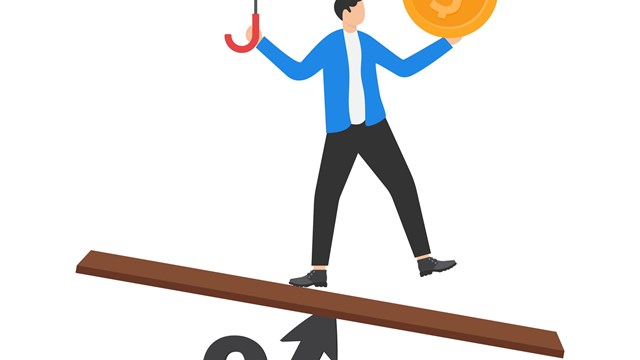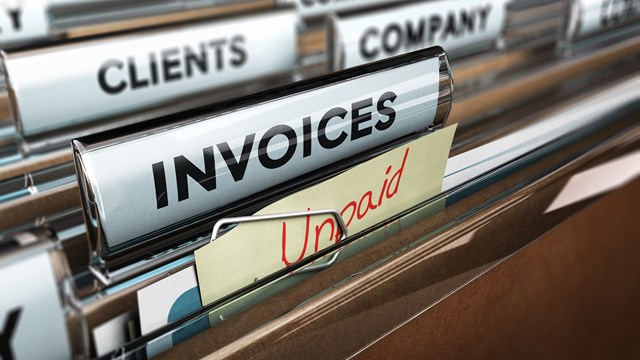
In 2001, the Amalgamated Houses co-op in the Bronx paid $287,000 in insurance premiums. The following June, when the existing policy terminated, the yearly tab rose to a staggering $427,000—an increase of almost 50 percent. And wasn’t just the Amalgamated Houses whose insurance costs skyrocketed. All across the city, in buildings both commercial and residential, premiums rose markedly.
“2002,” recalls James A. Fenniman, executive vice president of MLW/ Bollinger NY, one of the city’s larger insurers, “was a problem.”
Wherefore the uptick in premiums? Obviously, the events of September 11, 2001, had a profound impact on the insurance industry. The reluctance of insurers to underwrite buildings perceived as potential terrorist targets explains some of the sharp increases, but as terrorist targets go, the Amalgamated Houses are not exactly Rockefeller Center.
By last year, pricing had come back down; in 2006, the costs in New York, if not the rest of the country, have flattened out. How much of a factor was 9/11 on insurance rates in the city? Did the industry use 9/11 as an excuse to raise prices, or was such an increase inevitable? What can co-op and condo associations do to reduce their insurance costs? And, most importantly, is the recent price stabilization here to stay—or is it the calm before the storm?
The Industry
To understand why prices rose so sharply, why they fell, and why they may increase again, we must first understand a little about the insurance industry.
“Property and casualty insurance is very competitive, and is characterized by cycles of competitive pricing,” explains Warren W. Heck, chairman and CEO of Manhattan-based GNY Insurance Companies, one of the larger providers of insurance for cooperative housing in the city.
“To lure customers, pricing gets low,” he says, “then it gets so low that it’s below cost, so companies leave the market. Then, the prices go back up because there are fewer companies willing to insure the buildings.”
Essentially, this is what happened in New York in the 1980s and 1990s. By the end of the decade, the industry was beginning to correct what Fenniman calls “a long-lingering soft market,” in which the cost of premiums was suppressed by—among other factors—a buoyancy on Wall Street that had carried over from the mid-90s, inflation, the rising cost of construction, and the marked rise of property values.
“Companies began to get more realistic about what a building was actually worth,” Heck says. In many cases, co-ops and condos didn’t have enough insurance to pay the bills in the event of a catastrophe. The premiums had been too low for too long. Something had to give. But no one could have guessed at the tragedy that would cause the change.
The Tragedy
“Increases had been trending at one percent a month in ’01 anyway,” Fenniman explains. “If 9/11 hadn’t happened, we’d be at the same prices we’re at now, but the increases would have been gradually spread over two or three years.”
Instead, the events of September 11, 2001, sent the insurance industry into months of turmoil that led, ultimately, to a huge jump in rates.
“9/11 gave the insurance companies either an excuse or an opportunity to make corrections in the industry,” says Ed Yaker, president of Amalgamated Houses. “Rates shot up tremendously after 9/11.”
The rate increases were across-the-board, covering everything from general liability to directors and officers (D&O) to fidelity coverage.
“The industry was in shock,” Fenniman says. “There was a whole new level of terrorism no one had underwritten since 1993 [after the first World Trade Center bombing]. A repetitive incident, at the same location…it was a disaster.”
“After the World Trade Center attack, most companies ran for the hills,” Heck says. The dearth of companies willing to underwrite policies only fed the uptick in costs.
The Reinsurers
In order to spread the risk throughout the industry, direct insurers contract with reinsurance companies, who pay the bulk of the heavier losses. According to Fenniman, most of the reinsurance companies are located in Europe—Germany in particular—where the industry isn’t regulated as tightly as it is here. It was the reinsurance companies who footed most of the 9/11 bills. They were willing to do this once, but never again.
“The contracts came up in July,” Fenniman says. “And they were able to exclude terrorism in January of ’02.”
This meant that insurers like MLW/Bollinger NY were left without a safety net, and would be liable for the full freight, should an attack happen again. The market froze, as insurers scrambled to reassess their risk. Most companies withdrew from New York altogether.
“Any kind of trophy property, or one in the proximity of a terrorist target, was at risk,” says Fenniman. “Anything near the UN, anybody down the Park Avenue corridor, museums. I live near Lincoln Center, at that was considered a big risk.”
Underwriters—the ones who determine insurance rates based on risk assessment—were at a loss.
“Rates could have conceivably doubled or tripled,” Fenniman says. “In January of ’02, the commercial market is in a tailspin, the residential market is in a tailspin, there were tremendous capacity problems.”
The Aftermath
In 2002, the companies who remained in the city, like GNY and MLW/Bollinger, reevaluated their underwriting and made the necessary changes. In the case of the former, instead of insuring up to $250 million per building, as they did previously, they were now capping their policies at $50 million per building, in order to mitigate the risk.
“In 2002, 2003, and 2004, there were large increases brought about from the earlier period,” Heck says, “to allow for the higher costs of reinsurance and the cost of insuring for terrorism.”
Co-ops and condos, for their part, did what they could to reduce costs.
“We’re aware of risk and do what we can to manage risk,” says Yaker. “A good broker and a good insurance company will help with this. We eliminated trip hazards, we make sure things are repaired, and bring any potential claims to attention.”
For example, damaged sidewalks—the maintenance of which is now the building’s responsibility—must be repaired at once, as soon as a crack appears in the concrete. And because it’s cheaper in the long run to avoid numerous petty claims, co-op and condo boards opted for policies with larger deductibles.
“Loss history is very important to underwriting,” Heck says. “Losses are a large part of [what determines] the rate.”
The idea of a risk pool was also bandied about. A group of cooperative buildings of similar risk rate would band together and get one policy, and in so doing, spread out the risk among more people.
“The problem with that,” Yaker says, “is that you’re buying in bulk but exposing yourself to more risk. If you have a bad year, it could cost everyone else. If they have problems, it costs you.”
None of this would have done much to stem the rising rates, however, without help from the federal government. Sometimes, it would seem that the best way to deal with an act of God is with an act of Congress.
A Safety Net
In November of 2002, after intensive lobbying by the insurance industry—including Fenniman and Heck, who both testified before the Senate—President George Bush signed into law the Terrorism Risk Insurance Act, or TRIA.
As the FDIC acts as a backstop protecting individual depositors against bank failures and thus eliminating the once-prevalent threat of bank runs, so TRIA establishes the U.S. Treasury as the safety net in the event of catastrophic terrorist attacks. In effect, TRIA does the job the reinsurance companies refused to do post-9/11.The act’s passage had a significant—if not immediate—impact on rates.
“The last two years, things have stabilized,” says Yaker.
“The last two to three years, it’s been stable,” echoes Fenniman.
“In ’05, it settled down. This year, it’s flat,” says Heck.
Not that the relatively calm waters are always so. Companies still struggle in making their underwriting decisions where terrorism is concerned.
For example, “Zarqawi”—Abu Musab al-Zarqawi, the Jordanian-born man who was linked with al-Qaeda—“is dead. How will that impact the threat of terrorism in New York?” Fenniman wonders. “Ask ten people on the street, and they’ll have ten different answers. I don’t know.”
The gravest concern in the industry is the fate of TRIA. The act was to expire at the end of 2005, but it was extended that December for two more years.
“They should have done it sooner,” Fenniman says. “They had it ready in July, they had it ready in November. They shouldn’t have waited so long.”
Convincing the government to extend the act “was like pulling teeth,” Heck says, and wonders whether Congress will act the same way in 2007, after the mid-term elections—when its composition might be quite different—or allow TRIA to lapse.
Repairing sidewalks promptly is important too, but the most important course of action co-op and condo owners can take to prevent a relapse of skyrocketing insurance premiums is to do whatever they can to ensure that TRIA is extended past ‘07.
“What your article should be about,” Heck says, sounding a somewhat ominous tone, “is what would happen if it wasn’t extended. Without that backstop, the whole economy would falter. It’s a threat to the entire country, not just the city.” n
Greg Olear is a freelance writer living in New Jersey.






Leave a Comment